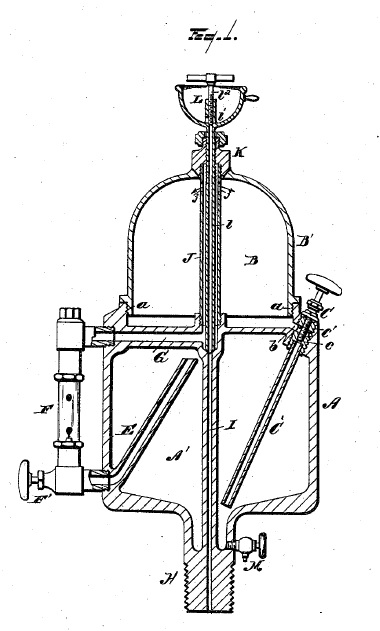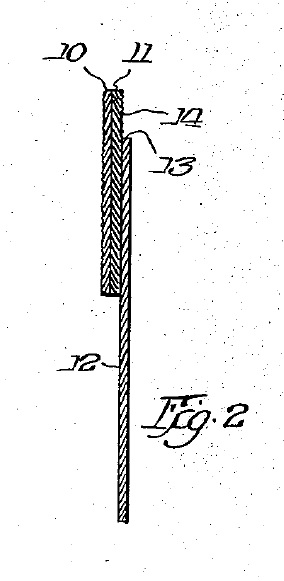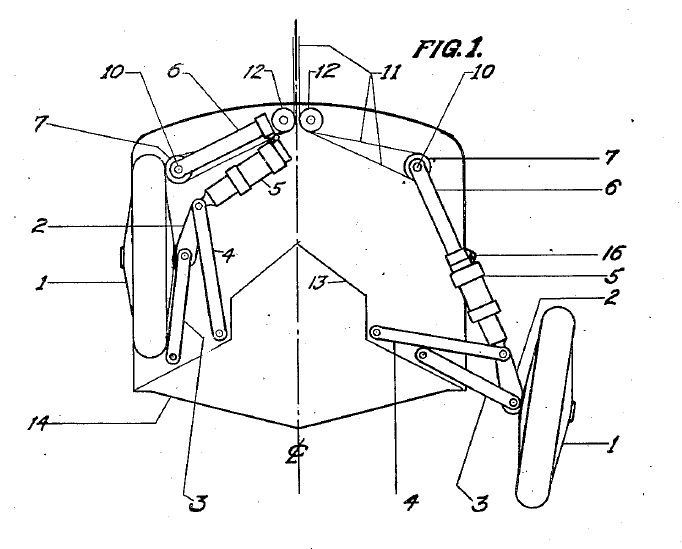On May 29, 1888, U.S. Patent No. 383,746, issued to Elijah McCoy on a Lubricator (the “Real McCoy”).
May 28 Patent of the Day
Applicant Cannot Bypass the PTAB to get to Federal Circuit
In In re Arunachalam, [2016-1560] (May 27, 2016), the Federal Circuit dismissed Arunachalam direct appeal to the Federal Circuit from the final rejection of his claims in prosecution following a new ground of rejection entered by the PTAB.
Under 28 U.S.C. § 1295(a)(4)(A), the Federal Circuit has exclusive jurisdiction over an appeal from a “decision” of the Board. The Federal Circuit has held that § 1295(a)(4) should be read to incorporate a finality requirement. Thus the Federal Circuit concluded that it lacked jurisdiction to hear a non-final appeal from the Patent Office. Pursuant to § 134(b), Dr. Arunachalam may appeal the Examiner’s decision to the Board, and only after the Board issues a final decision can the Federal Circuit exercise jurisdiction to review the Board’s decision.
Consistent Usage and Disclaimer in Intrinsic Record Trump Anything in Extrinsic Record
In David Netzer Consulting Engineer LLC, v. Shell Oil Company, [2015-2086] (May 27, 2016), the Federal Circuit affirmed summary judgment of non-infringement of U.S. Patent 6,677,496 on a process for the coproduction of ethylene and purified benzene.
At issue was the meaning of the term “fractionating” in the claims. The Federal Circuit noted that the district court did not make any factual findings to support its claim construction, but found that because the intrinsic record alone determines the proper construction in this case, it was able to conduct its review adequately, de novo.
Claim terms are generally given their ordinary and customary meaning as understood by a person of ordinary skill in the art at the time of the invention. Because that meaning is often not immediately apparent, and because patentees frequently use terms idiosyncratically, the court looks to the intrinsic record, including “the words of the claims themselves, the remainder of the specification, the prosecution history, as well as to extrinsic evidence when appropriate, to construe a disputed claim term.
The patent owner argued that fractionizing simply meant separating, but the Federal Circuit disagreed, finding that fractionating means separating compounds based on differences in boiling points. The Federal Circuit noted that the specification repeatedly and consistently uses “fractionating” or “fractionation” to describe separating petrochemicals based on boiling point differentials. Moreover, the Federal Circuit noted, the patentee made clear and unmistakable statements in the intrinsic record, distinguishing the claimed invention from and disclaiming conventional extraction.
The Federal Circuit also rejected conflicting extrinsic evidence cited by the parties, explaining that extrinsic evidence may not be used to contradict claim meaning that is unambiguous in light of the intrinsic record.
Having affirmed the claim construction, the Federal Circuit likewise affirmed summary judgment of noninfringement, adding that disclaimer applied to both literal infringement and to infringement under the doctrine of equivalents.
May 27 Patent of the Day
“Mountable” Given Meaning Consistent with Specification, and Not Broad Dictionary Definition
In Profectus Technology LLC v. Huawei Technologies Co. Ltd., [2015-1016, 2015-1018, 2015-1019] (May 26, 2016), the Federal Circuit affirmed the district court’s construction of “mountable,” and thus summary judgment of non-infringement.
At issue was U.S. Patent No. 6,975,308, which discloses a mountable digital
picture frame for displaying still digital images, and in particular the claim language ““a mountable picture frame adapted to digitally display at least one still image thereon,” which Profectus as asserting against certain tablet devices with stands. The district court concluded that “the picture frame or display must have some intrinsic mounting feature—not just a feature that could potentially render the frame or display capable of being mounted.”
Profectus argued on appeal that “mountable” meant capable of being mounted, while defendants argued that the fact that a device is capable of mounting does not make it “mountable.” The Federal Circuit agreed with defendant, noting that the term “mountable” is a modifying word in the claims: “mountable picture display,” “mountable picture frame,” “wall mountable,” and “desk top mountable.” The Federal Circuit observed that absent from the claims are words that embrace broader meaning, such as “capable of,” “adapted to,” or “configured to.” The claim language is tailored to, characterizes, and delimits the claimed “picture frame” and “picture display.” The Federal Circuit further noted that the specification does not disclose a bare embodiment in which the picture display or picture frame lacks a feature for mounting.
By noting that the picture display or frame must have some intrinsic mounting feature, the district court correctly, specification, that the picture display or frame must include something that may be used for mounting the device.
May 26 Patent of the Day
On May 26, 1868, U.S. Patent No. 78,317 issued to Alfred Nobel in an Improved Explosive Compound (dynamite).
Patent Owner Must Show Patentability Over Art of Record to Amend Claims in IPR
In In re Aqua Products, Inc., [2015-1177] (May 25, 2016), the Federal Circuit affirmed the PTAB’s denial of the patent owner’s motion to amend in IPR2013-00159.
The Federal Circuit made quick work of the PTAB’s placing the burden on the patent owner to show patentability over all of the prior art of record, holding it was bound by precedent.
The Federal Circuit also found no abuse of discretion in the Board’s failure to to evaluate objective indicia of non-obviousness and various new limitations in the proposed claims, because Aqua did not argue that those indicia and limitations distinguish the proposed claims over the prior art. The PTAB’s obligation with respect to motions to amend is limited to considering
only those arguments that the patent owner actually raises, The Federal Circuit said that to hold otherwise would require the Board to fully reexamine the proposed claims in the first instance, effectively shifting
the burden from the patentee to the Board. The Federal Circuuit said that consideration of a motion to amend in compliance with the APA only requires
that the Board show that it fully considered the particular arguments raised by the patentee and that it provided a reasoned explanation for why those arguments were unpersuasive.
May 25 Patent of the Day
On May 25, 1948, U.S. Patent No. 2,442,141 issued to Andrew J. Moyer on a Method of Production of Penicillin.




